Abstract
Since the development of insecticide-resistance and the consequent partial failure of the chemical approach to the control of disease vectors, interest in the biological approach has re-awakened. An aspect of the latter approach that is of great current interest is “autocidal control”—that is, the use of insects for their own destruction. This paper discusses the various ways in which genetic mechanisms can be used to bring about the destruction of harmful insects, with special reference to those of medical importance. The author considers that the prospects for the genetic control of vector species are good, but stresses that before genetic methods can be applied on a field scale certain requirements must be met. For example, genetic technology must be expanded, a firm background of genetic knowledge of vector species must be built up, a great deal more information about vector ecology, particularly population dynamics, must be acquired, and techniques for the mass production of vector insects under controlled conditions must be developed.
Full text
PDF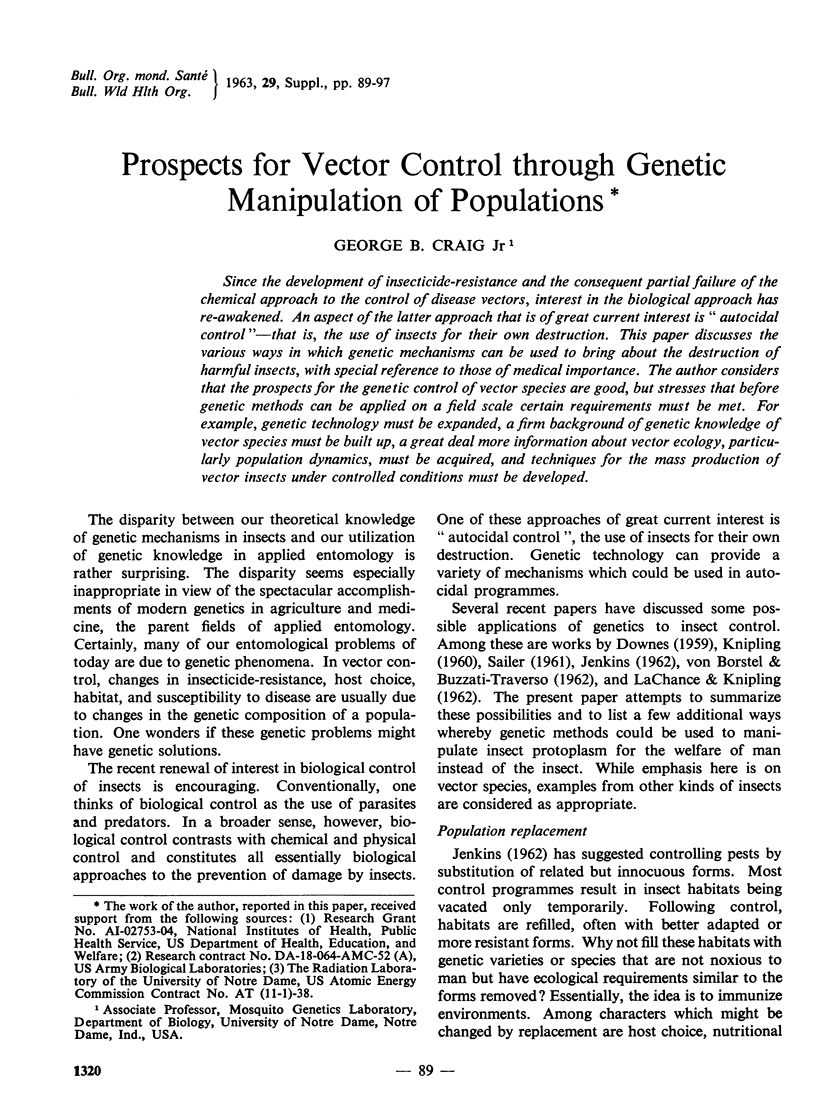

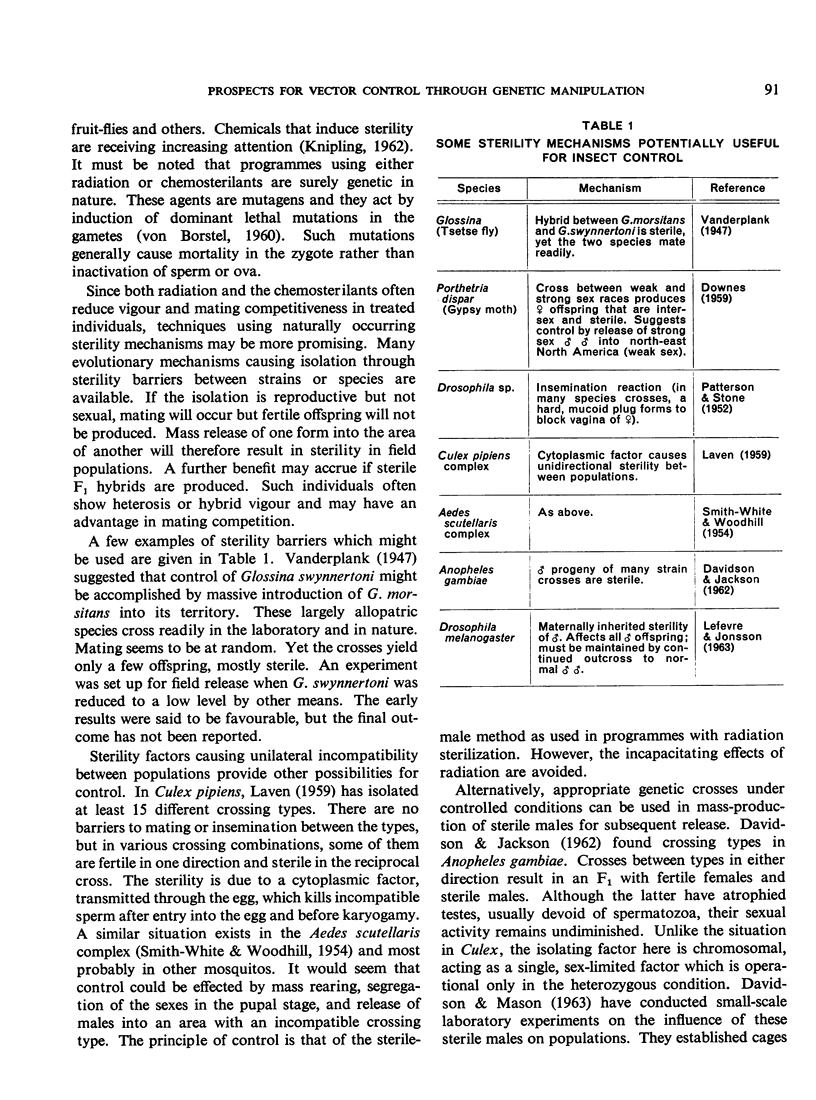
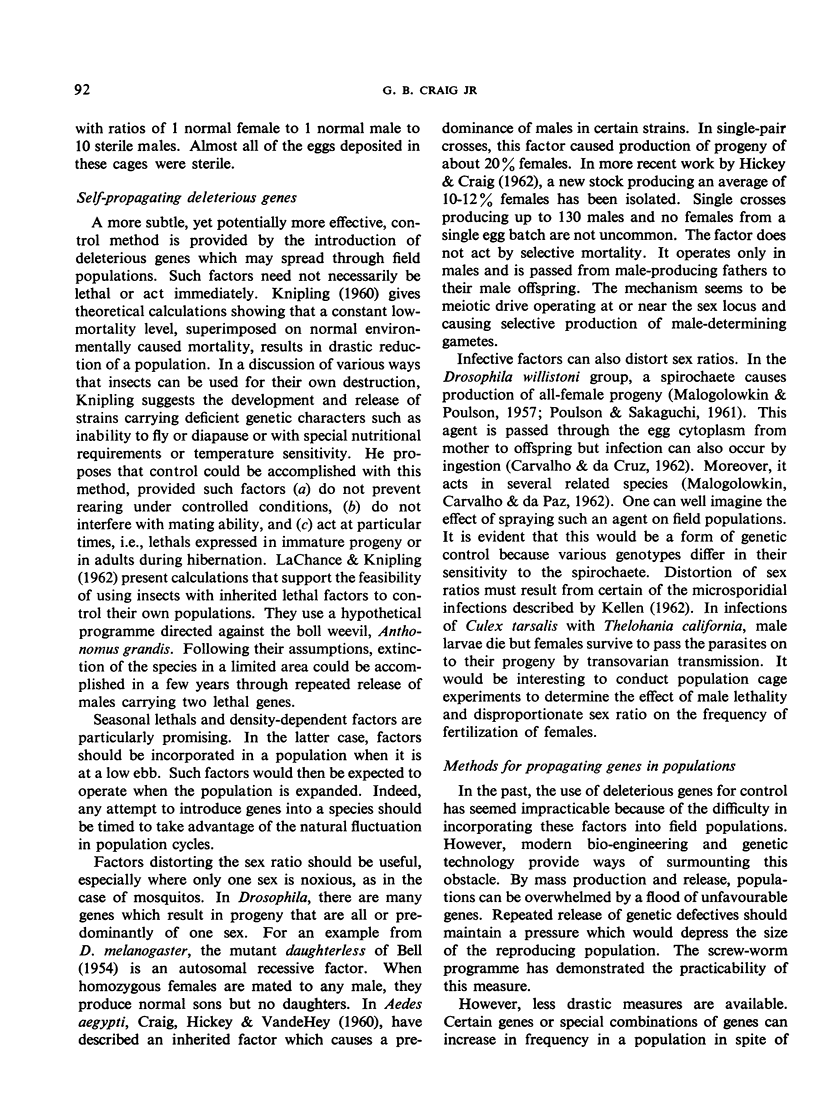
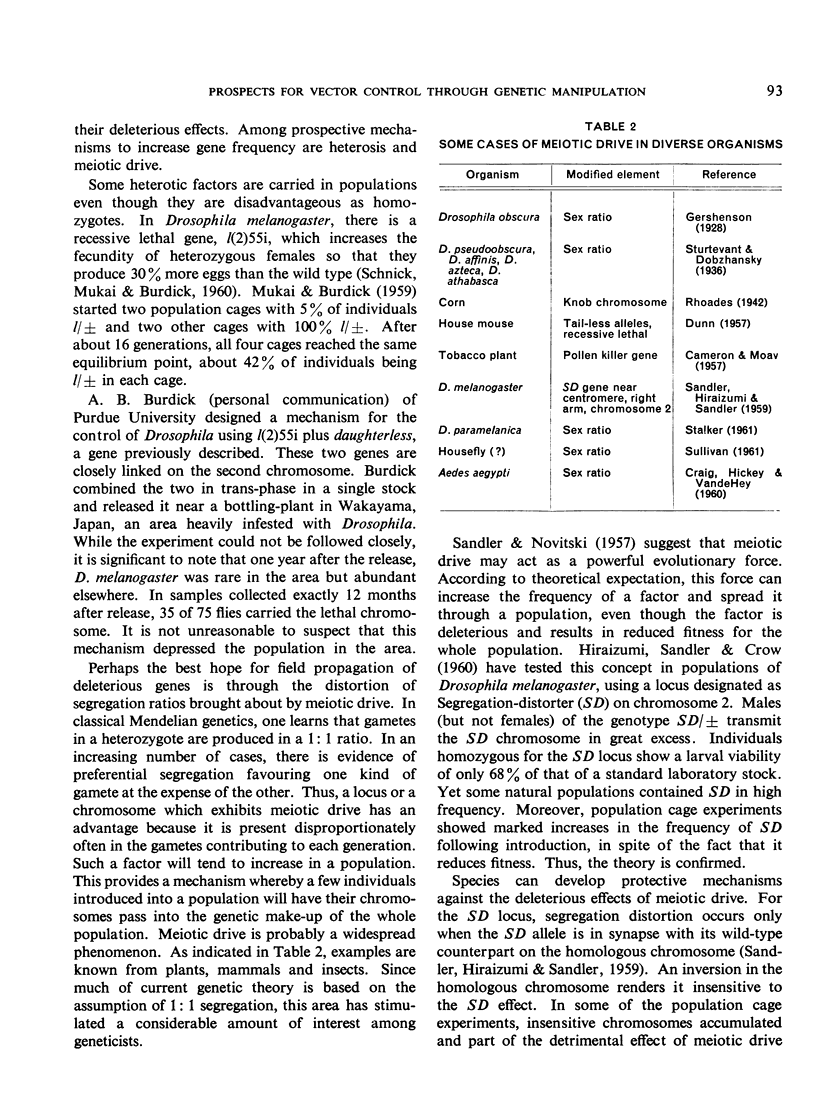
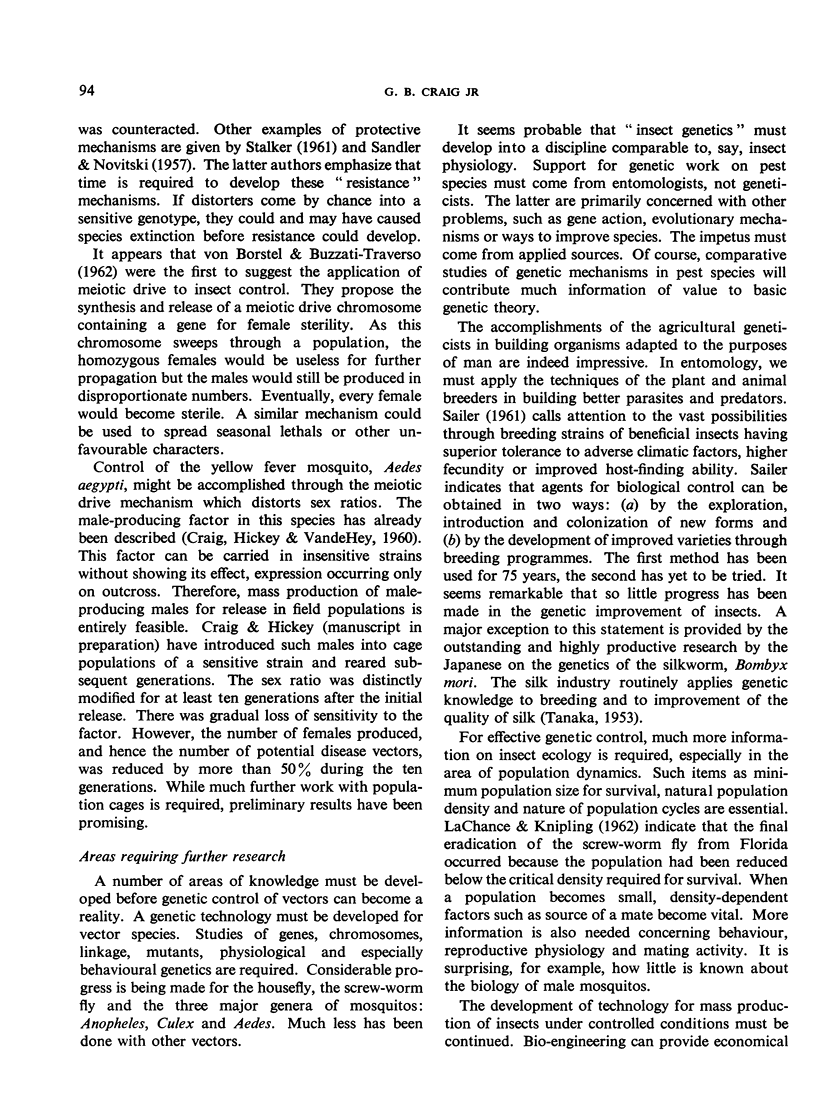

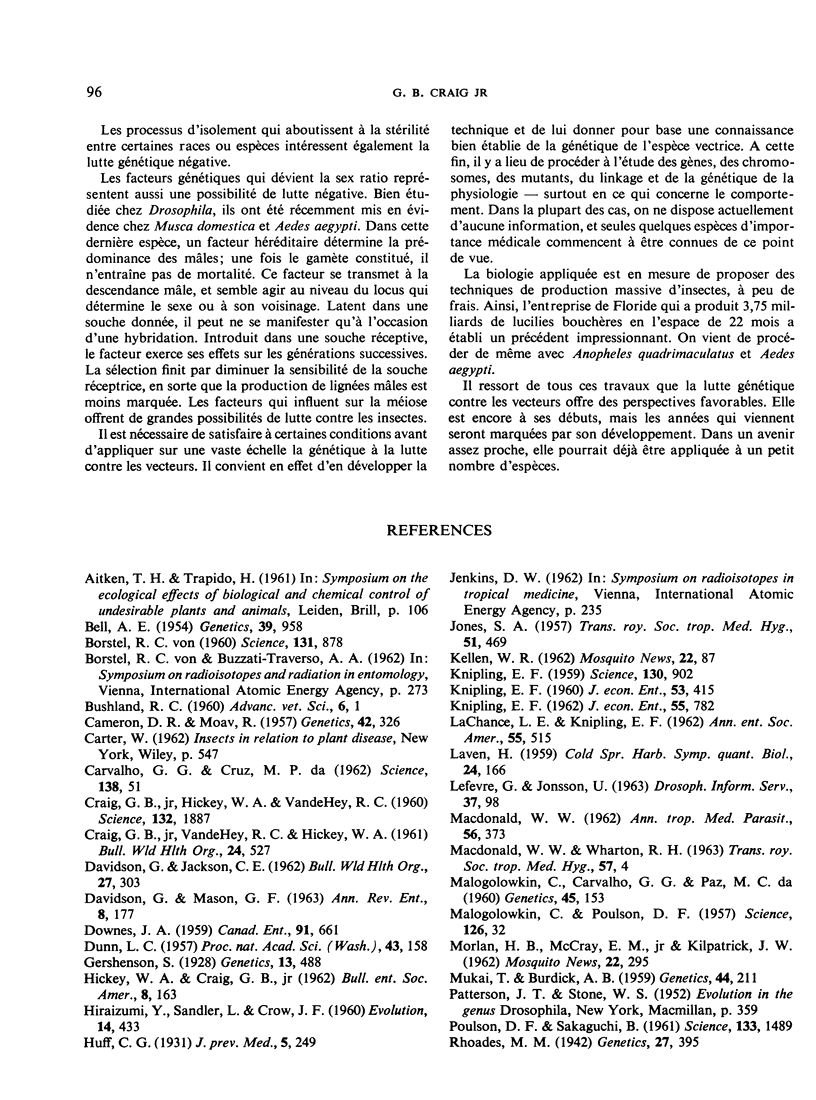
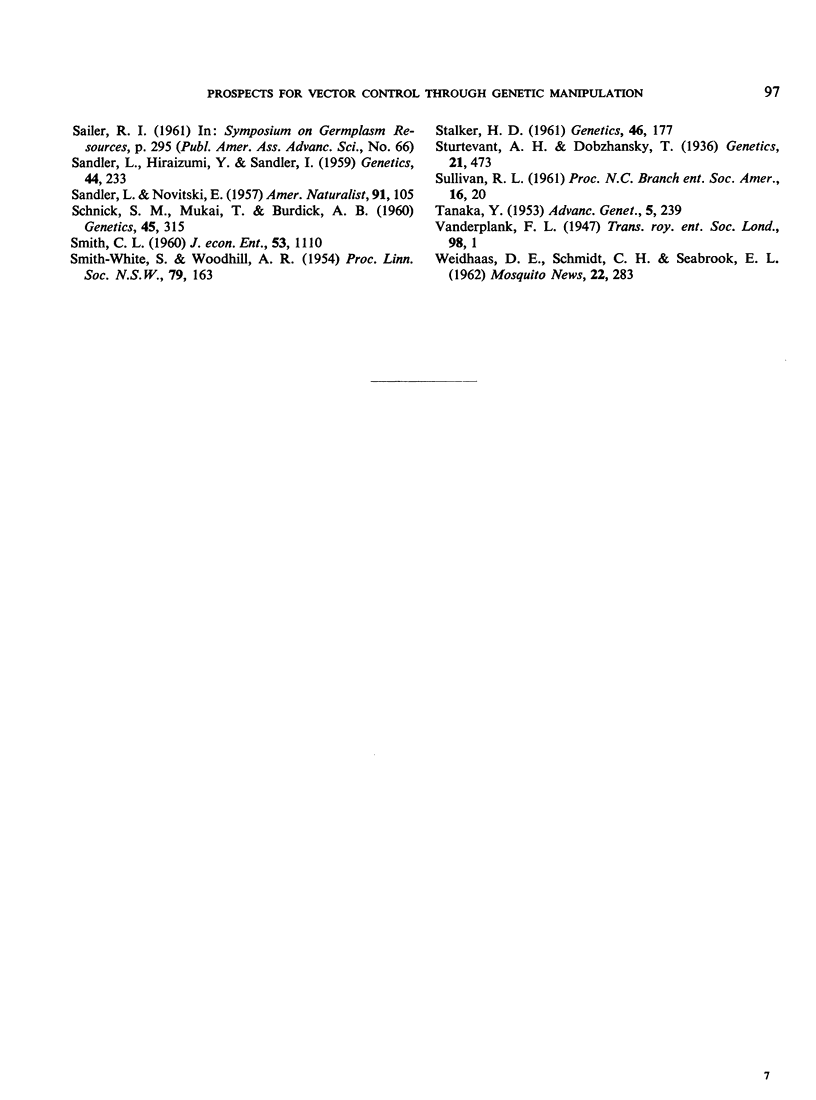
Selected References
These references are in PubMed. This may not be the complete list of references from this article.
- CRAIG G. B., Jr, HICKEY W. A., VANDEHEY R. C. An inherited male-producing factor in Aedes aegypti. Science. 1960 Dec 23;132(3443):1887–1889. doi: 10.1126/science.132.3443.1887. [DOI] [PubMed] [Google Scholar]
- CRAIG G. B., Jr, VANDEHEY R. C., HICKEY W. A. Genetic variability in populations of Aedes aegypti. Bull World Health Organ. 1961;24:527–539. [PMC free article] [PubMed] [Google Scholar]
- Cameron D R, Moav R M. Inheritance in Nicotiana Tabacum Xxvii. Pollen Killer, an Alien Genetic Locus Inducing Abortion of Microspores Not Carrying It. Genetics. 1957 May;42(3):326–335. doi: 10.1093/genetics/42.3.326. [DOI] [PMC free article] [PubMed] [Google Scholar]
- DAVIDSON G., JACKSON C. E. Incipient speciation in Anopheles gambiae Giles. Bull World Health Organ. 1962;27:303–305. [PMC free article] [PubMed] [Google Scholar]
- DAVIDSON G., MASON G. F. Genetics of mosquitoes. Annu Rev Entomol. 1963;8:177–196. doi: 10.1146/annurev.en.08.010163.001141. [DOI] [PubMed] [Google Scholar]
- Dunn L. C. EVIDENCE OF EVOLUTIONARY FORCES LEADING TO THE SPREAD OF LETHAL GENES IN WILD POPULATIONS OF HOUSE MICE. Proc Natl Acad Sci U S A. 1957 Jan 15;43(1):158–163. doi: 10.1073/pnas.43.1.158. [DOI] [PMC free article] [PubMed] [Google Scholar]
- Gershenson S. A New Sex-Ratio Abnormality in DROSOPHILA OBSCURA. Genetics. 1928 Nov;13(6):488–507. doi: 10.1093/genetics/13.6.488. [DOI] [PMC free article] [PubMed] [Google Scholar]
- KNIPLING E. F. Sterile-male method of population control. Science. 1959 Oct 9;130(3380):902–904. doi: 10.1126/science.130.3380.902. [DOI] [PubMed] [Google Scholar]
- LAVEN H. Speciation by cytoplasmic isolation in the Culex pipiens-complex. Cold Spring Harb Symp Quant Biol. 1959;24:166–173. doi: 10.1101/sqb.1959.024.01.017. [DOI] [PubMed] [Google Scholar]
- MALOGOLOWKIN C., POULSON D. F. Infective transfer of maternally inherited abnormal sex-ratio in Drosophila willistoni. Science. 1957 Jul 5;126(3262):32–32. doi: 10.1126/science.126.3262.32. [DOI] [PubMed] [Google Scholar]
- Mukai T, Burdick A B. Single Gene Heterosis Associated with a Second Chromosome Recessive Lethal in Drosophila Melanogaster. Genetics. 1959 Mar;44(2):211–232. doi: 10.1093/genetics/44.2.211. [DOI] [PMC free article] [PubMed] [Google Scholar]
- POULSON D. F., SAKAGUCHI B. Nature of "sex-ratio" agent in Drosophila. Science. 1961 May 12;133(3463):1489–1490. doi: 10.1126/science.133.3463.1489. [DOI] [PubMed] [Google Scholar]
- Rhoades M M. Preferential Segregation in Maize. Genetics. 1942 Jul;27(4):395–407. doi: 10.1093/genetics/27.4.395. [DOI] [PMC free article] [PubMed] [Google Scholar]
- Sandler L, Hiraizumi Y, Sandler I. Meiotic Drive in Natural Populations of Drosophila Melanogaster. I. the Cytogenetic Basis of Segregation-Distortion. Genetics. 1959 Mar;44(2):233–250. doi: 10.1093/genetics/44.2.233. [DOI] [PMC free article] [PubMed] [Google Scholar]
- Schnick S M, Mukai T, Burdick A B. Heterozygote Viability of a Second Chromosome Recessive Lethal in Drosophila Melanogaster. Genetics. 1960 Mar;45(3):315–329. doi: 10.1093/genetics/45.3.315. [DOI] [PMC free article] [PubMed] [Google Scholar]
- Stalker H D. The Genetic Systems Modifying Meiotic Drive in Drosophila Paramelanica. Genetics. 1961 Feb;46(2):177–202. doi: 10.1093/genetics/46.2.177. [DOI] [PMC free article] [PubMed] [Google Scholar]
- Sturtevant A H, Dobzhansky T. Geographical Distribution and Cytology of "Sex Ratio" in Drosophila Pseudoobscura and Related Species. Genetics. 1936 Jul;21(4):473–490. doi: 10.1093/genetics/21.4.473. [DOI] [PMC free article] [PubMed] [Google Scholar]
- von Borstel R. C. Population Control by Release of Irradiated Males. Science. 1960 Mar 18;131(3403):878–882. doi: 10.1126/science.131.3403.878. [DOI] [PubMed] [Google Scholar]


